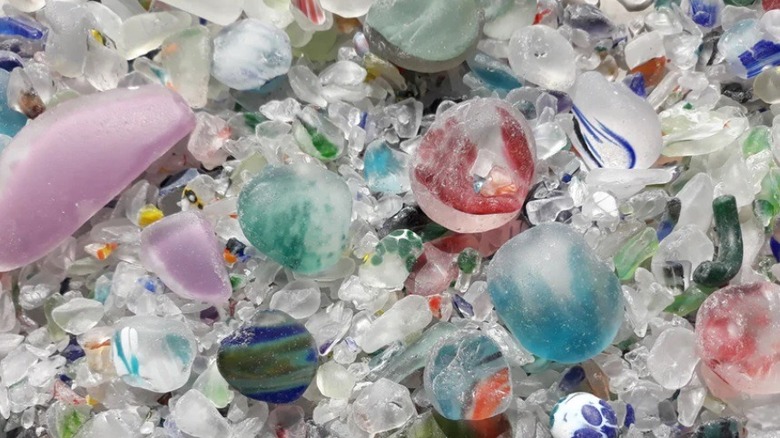What To Know Before Using Gravel Around Your Backyard Fire Pit
Of all backyard features, a fire pit is among those that stimulate the senses the most. The flames flicker, crackle, and toast the air. Add gravel around the fire pit to create a dramatic seating area, and there's even more to see, hear, and feel, with that crunch and pop-under feet as people gather while the sun goes down.
Beyond aesthetics, gravel serves a structural purpose, too. Whether you create a DIY fire pit in your yard or hire a professional to do the installation, the rock fragments you choose will be key in staving off flooding from rain and melting snow, as well as any water used to douse flames that may spill over onto the ground. Standing water often makes the fire pit a common backyard feature that unexpectedly attracts pests, such as mosquitoes. Rocks are also often used inside a fire pit to help distribute heat. But for safety reasons, it's important to note that the most popular varieties of gravel distributed around fire pits should not be placed inside them.
The pros and cons of popular rock materials
Usually gray, angular, and jagged, crushed limestone is a favored choice for fire pit seating areas because it drains and compacts well. Pea gravel, which comes in shades of white and brown, has to be regularly raked because it tends to shift and move and doesn't drain as well as limestone. Then there are sharps, which are crushed stones commonly seen in white or gray. Sharps are particularly good for providing a secure surface for walking, reducing the risk of falls around the fire pit. The stones can erode, so they may need to be replaced over time.
Home improvement professionals do not recommend using any of these materials inside the fire pit because the rocks can explode in high heat. Instead, lava rocks are a safe alternative, along with sand, marble, concrete, slate, and fire-grade brick. It's always a good idea to keep a fire extinguisher nearby, take extra precautions with children and pets, make sure the area is situated away from flammable materials, and ensure that embers are always fully extinguished when not in use.
Stylish and sustainable gravel alternatives for your seating area
Before using gravel, also realize that eco-friendly materials have emerged as handsome and stylish substitutes for gravel in fire pit landscapes. There are crushed shells from clams, oysters, and other sea creatures, with surfaces that sparkle in certain light while also nourishing the landscape with nutrients they contain. Crushed brick keeps construction waste out of our landfills while bringing pops of red and orange to the yard. You can also use silica sand, which resists heat. Recycled glass, with its unusual shapes and colors, is smoothed and polished to be safe and comfortable to walk on. Fetching tumbled glass for landscapes from Handcrafted ATX is sold from $4.50 to $105.00 in bags up to 50 pounds.
Whatever material you choose, using a layer of landscape fabric underneath is recommended to prevent weeds. For seating area cover that doesn't move around, there are methods for taming loose gravel. HGTV's Property Brothers have a genius hack for keeping gravel in place by using a series of grids. Some also suggest installing edging to contain material and keep the area looking neat.


